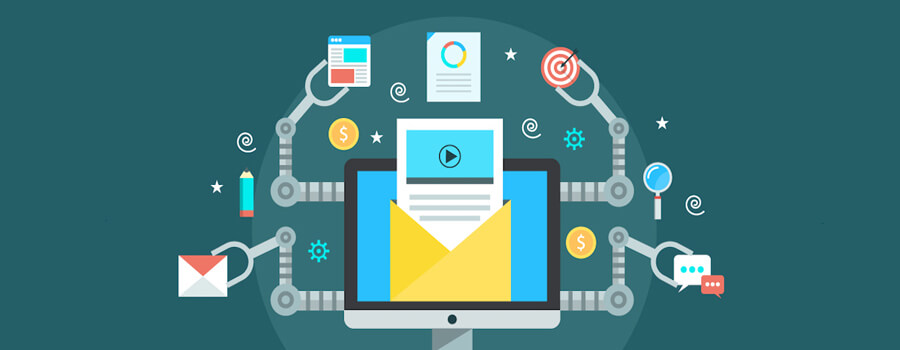Digital Process Automation is more than just a buzzword in today’s tech-savvy world it represents a crucial evolution in how businesses operate.
DPA refers to the use of technology to automate complex business processes and functions beyond traditional data manipulation.
Understanding the evolution of digital process automation is essential for appreciating its current impact and future potential. This journey through time from its nascent stages to the advanced systems of today and beyond sheds light on how automation has transformed industries and what the future holds.
The Past: Origins and Early Developments
Early Automation Technologies
The story of Digital Process Automation begins with the advent of early automation technologies. In the early 20th century, businesses began adopting mechanical systems to streamline production processes.
Assembly lines, pioneered by Henry Ford, were among the earliest forms of automation that laid the groundwork for future advancements.
These systems were designed to enhance efficiency and reduce manual labor, but they were limited to physical tasks and lacked the flexibility of modern solutions.
As technology progressed, the 1960s and 1970s saw the introduction of early computer systems and software designed to automate specific tasks.
These systems, while groundbreaking at the time, were relatively rudimentary compared to today’s standards. They focused primarily on data processing and management, setting the stage for the development of more sophisticated automation tools.
Initial Challenges
Despite their revolutionary nature, early DPA systems faced several challenges. One major issue was the lack of integration capabilities. Early automation tools were often isolated, functioning independently without seamless interaction with other systems.
This limitation led to data silos and inefficiencies, as different departments or systems could not easily share information or coordinate processes.
Another challenge was the high cost and complexity of implementation. Early automation systems were expensive and required significant technical expertise to install and maintain.
As a result, only large enterprises with substantial resources could afford to invest in these technologies, leaving smaller businesses at a disadvantage.
Pioneering Examples
Among the pioneers of early DPA was the introduction of Enterprise Resource Planning (ERP) systems in the 1990s. Companies like SAP and Oracle led the charge in creating integrated software solutions that could manage various business functions, from finance to human resources.
These early ERP systems marked a significant step forward in digital process automation, offering a more holistic approach to managing business processes and data.
Another notable example is the development of Robotic Process Automation (RPA) in the early 2000s. RPA technology allowed businesses to automate repetitive tasks using software robots, which could mimic human interactions with digital systems.
This innovation helped bridge the gap between manual and automated processes, providing a more efficient way to handle routine tasks.
The Present: Current State of Digital Process Automation
Technological Advancements
Today, Digital Process Automation has evolved dramatically, thanks to significant technological advancements. Modern DPA solutions leverage artificial intelligence (AI), machine learning, and advanced analytics to enhance their capabilities.
AI-driven automation tools can analyze vast amounts of data, identify patterns, and make data-driven decisions in real-time, significantly improving process efficiency and accuracy.
Robotic Process Automation (RPA) has also advanced, with new features such as cognitive automation and natural language processing.
These enhancements enable RPA systems to handle more complex tasks, such as interpreting unstructured data or interacting with users in natural language. This evolution has expanded the scope of DPA, allowing businesses to automate a broader range of processes.
Integration with Existing Systems
One of the key advancements in contemporary DPA is the ability to integrate seamlessly with existing systems. Modern DPA platforms are designed to work harmoniously with legacy systems, ensuring that businesses can automate processes without completely overhauling their existing IT infrastructure.
This integration is crucial for businesses that rely on older systems but want to benefit from the efficiencies offered by modern automation tools.
Key Features
Contemporary Digital Process Automation platforms come with a host of essential features designed to optimize business processes. These features include:
- Process Mapping and Modeling: Tools that allow businesses to map out and visualize their processes, making it easier to identify areas for automation.
- Real-Time Monitoring and Analytics: Capabilities that provide insights into process performance, enabling businesses to make data-driven decisions and continuously improve their processes.
- Scalability: Modern DPA solutions are designed to scale with the growth of a business, allowing for the automation of increasingly complex processes as needs evolve.
- User-Friendly Interfaces: Enhanced user interfaces that make it easier for non-technical users to interact with and manage automation tools.
Case Studies
Several industries have successfully implemented Digital Process Automation to transform their operations. For example, in the financial sector, banks and insurance companies have used DPA to streamline customer onboarding processes, reduce processing times, and improve compliance.
In manufacturing, companies have automated supply chain management, leading to increased efficiency and reduced operational costs. These case studies highlight the diverse applications and benefits of DPA across different industries.
The Future: Trends and Predictions
Emerging Technologies
Looking ahead, the future of Digital Process Automation will be shaped by emerging technologies. AI and machine learning will continue to drive innovation in DPA, enabling even more sophisticated automation capabilities.
For example, predictive analytics powered by AI can forecast future trends and optimize processes accordingly, while machine learning algorithms can continuously improve automation performance based on historical data.
Increased Customization
Another trend is the move towards increased customization of DPA solutions. As businesses seek more tailored solutions to meet their specific needs, DPA providers will offer more customizable platforms.
This shift will allow businesses to automate processes in a way that aligns with their unique workflows and requirements, enhancing the overall effectiveness of automation.
Enhanced User Experience
The user experience of DPA platforms will also evolve, with a focus on making these tools more intuitive and accessible. Future DPA solutions will likely feature more advanced user interfaces, such as voice-activated controls or augmented reality dashboards, to make it easier for users to interact with and manage automation tools.
Global Impact
The global impact of Digital Process Automation will be significant. As more businesses adopt DPA, we can expect to see widespread improvements in operational efficiency, cost savings, and competitiveness. DPA has the potential to transform entire industries, driving economic growth and creating new opportunities for innovation and development.
Conclusion
The evolution of Digital Process Automation from its early origins to its current state and future potential highlights the remarkable progress made in this field. Understanding this evolution is crucial for businesses looking to harness the power of automation to improve their operations and stay ahead in a competitive landscape. As DPA continues to advance, it is essential for businesses to stay informed about the latest developments and explore how DPA solutions, like those provided by Docbyte, can benefit their operations.



